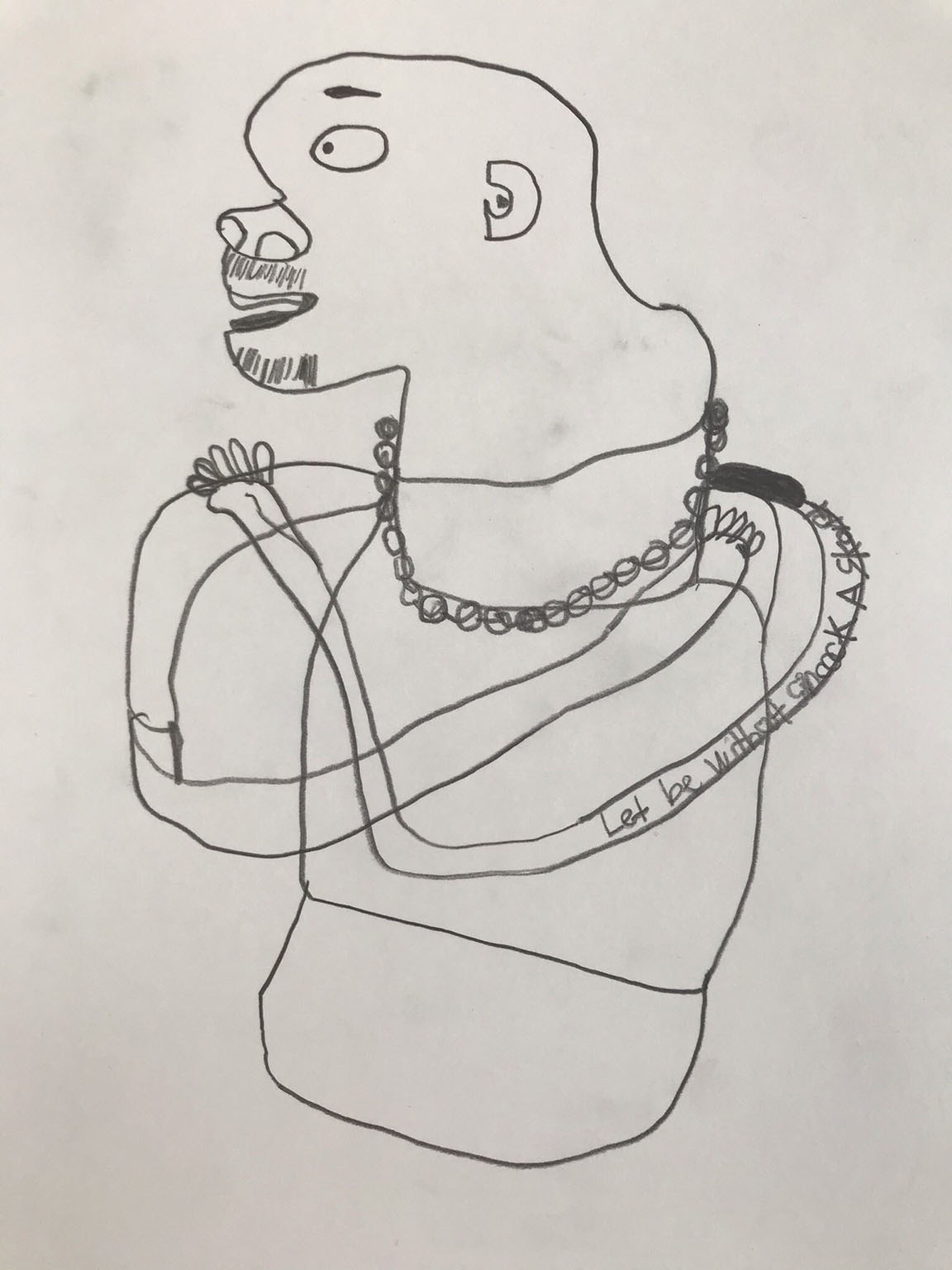How portraits of local people are inspiring London schoolchildren

Marcus Field finds out how Art Fund support is helping the National Portrait Gallery to engage school pupils across London with ideas around portraiture and identity.
Actor Riz Ahmed, comedian Lenny Henry and novelist Zadie Smith are among the sitters in works that feature in the National Portrait Gallery’s (NPG’s) new outreach programme for schools.
Called Faces and Places, and part of the NPG’s Art Fund-supported Inspiring People project, the programme is designed to continue the work of the gallery’s learning department while its central London building is closed for a major refurbishment project.

Schools in seven London boroughs are taking part, with activities focused on portraits from the NPG collection that have local connections. The portraits of Ahmed, Henry and Smith are among the 10 works selected for workshops in Brent, where all the sitters have links.
The first workshops led by gallery educators took place in the borough last autumn, while events in schools in Lambeth and Haringey are taking place this spring. Workshops in Westminster, Lewisham, Waltham Forest and Barking and Dagenham will follow.
‘The project explores what portraiture can reveal about ourselves, each other, our locality and our past and present,’ explains Francesca Laws, the NPG’s schools programmes manager. ‘We wanted to have an active programme while our building is temporarily closed, and this project allows us to make new relationships with schools which might never have visited the gallery.’ Laws says that Art Fund support was crucial to making Faces and Places possible.
At the heart of the programme is a resource box containing activity packs and large-scale reproductions of the 10 portraits from the NPG collection. To select portraits relevant to each borough, a longlist was initially drawn up.

‘The portraits could be of people who were born in the borough, or who might have lived or worked there. We also considered issues like gender, class and race to make sure the selections reflected the diversity of the borough,’ says Laws. ‘We then shared the longlist with schools and the students voted on the final selections.’
This process threw up unexpected and interesting results. Photographic portraits feature in the selections more prominently than paintings, and most of the chosen subjects are contemporary rather than historic figures. ‘In a couple of boroughs we were wondering why we had so many men on the longlist,’ says Laws, ‘but I think that tells us quite a lot about history and how it is told.’
Sportspeople are popular choices, with portraits of footballers Ian Wright and Rachel Yankey in the Brent selection, and boxer Henry Cooper chosen by Lambeth schools. Musicians also feature strongly, with David Bowie chosen in Lambeth, Skepta and Adele in Haringey, and George Michael and Courtney Pine in Brent.
But a common theme that links almost all the chosen subjects is activism. ‘The sitters have been selected as examples of inspiring people,’ explains Laws. ‘Many of them have been catalysts for change or used their platforms to campaign for important causes.’

Faces and Places has been designed for activities across all five key stages of the national curriculum. One of the first schools to take part in the programme was College Green, a nursery school in Brent. Gallery educator Marysa Dowling led the workshop there with three- and four-year-olds. ‘One of the first things that we did was to look at the large reproductions from the resource box and then perform the gestures and actions of the sitters,’ says Dowling. ‘We took photographs inspired by the portraits and then printed them out.’
Some of the work generated by these events has recently been put on show alongside some of the original portraits (loaned by the NPG) in the exhibition ‘Icons of Colour’, staged by Brent Museum and Archives. It’s the first time that the portrait of Zadie Smith by Toyin Ojih Odutola has been on public display.

This spring, Heartlands High School in Haringey became the first secondary school to take part in the programme, with older pupils encouraged to discuss questions such as what it means to be a hero and what makes someone worthy of a portrait. Pupils there have also been asked to propose new candidates for inclusion in the NPG collection. ‘All the suggestions that are made will be shared with our curators,’ says Laws.
When the NPG reopens its doors in June 2023, there will be an expanded learning centre and school groups will be welcomed back. In the meantime the Faces and Places activities are available on the gallery’s website for teachers who want to lead their own workshops.
Laws hopes that students who have enjoyed the programme will visit the refurbished building. ‘A big part of this project has been to send out the message that our collection is for everybody,’ she says. ‘And I think that’s something that really comes across when a local connection is made.’
Inspired by this story?
Art Fund is currently fundraising to raise £1 million for museum projects that inspire young people.
Thanks to a generous supporter, we’re now able to match-fund new donations – so anything you give from 8 February 2022 until 31 March 2022 will be matched pound-for-pound, making twice the impact. Find out how you can help #EnergiseYoungMinds.
A version of this article first appeared in the spring 2022 issue of Art Quarterly, the magazine of Art Fund.